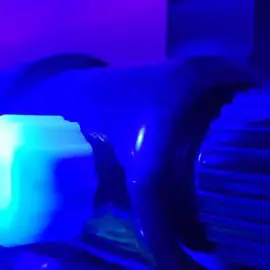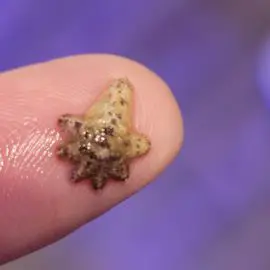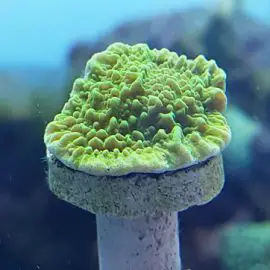How to Get Rid of Red Slime Cyanobacteria in a Reef Tank
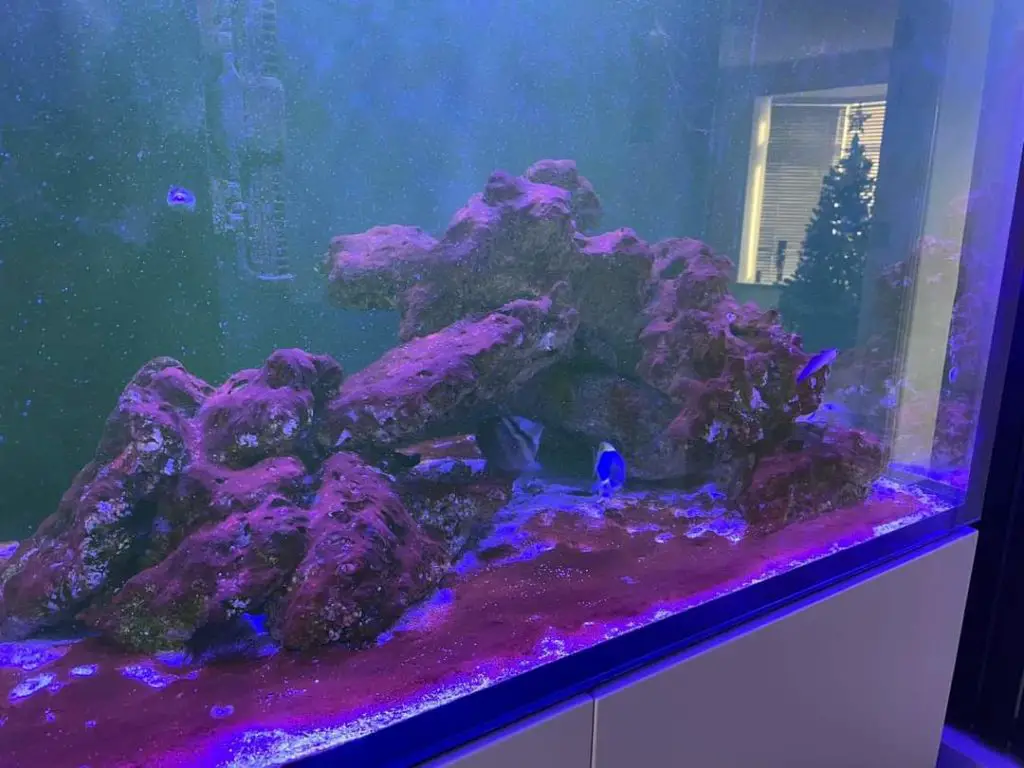
Cyanobacteria or ‘red slime’ is one of those unwanted occurrences that is most likely to affect maturing saltwater tanks, or tanks that are out of balance. Depending on how aggressively it is behaving in your aquarium, and how much of it you have, elimination can be a laboriously long process. In this article we will look at how to get rid of red slime cyanobacteria in a reef tank.
What is red slime algae?
‘Red slime algae’, or ‘Cyano’ as it is commonly referred to, actually is not an algae at all. Cyanobacteria as the name suggests, is a type of bacteria found in saltwater systems. It is photosynthetic, using light energy to convert inorganic substances into a food source. This simply means that it requires light to live and thrive. Cyano exists in every saltwater aquarium, and being an opportunistic bacteria, will flourish when conditions are right. Visually, Cyano resembles red velvet that can appear to ‘drape’ over your live rock and even your corals in low flow tanks, given the chance. It is safe to touch and feels slimy, which is where the name ‘red slime’ emerges.
Once Cyanobacteria blooms in your tank it very quickly adjusts to its new environment and starts to utilise all available food sources your system has to offer. If your system is conducive to cyanobacterial growth, it can spread incredibly rapidly.
Why am I getting red slime algae?
There is a lot of speculation in online forums and groups, and if you had to listen to every opinion you would soon discover that they all contradict each other. It could be that your nitrates are too low, or too high. It could be that your phosphate is too high or too low too. You could be told that your ‘system is unbalanced‘, often without explaining what this phrase means. The truth is that it is often nothing that you can control or stop. Once it finds even the smallest foothold, Cyano will proliferate.
Lighting has been blamed in the past, when most reef keepers used T5 fluorescent tubes then. As tubes aged, they lost their intensity and this encouraged the growth of red slime and other unwanted algae. However, with the advent of LED lighting, this can no longer be considered the reason. All LED lights have an output that exceeds 10,000K which on its own cannot be the singular cause of a Cyano outbreak, as Cyano prefers lighting under 10,000K.
Nutrients have been blamed extensively, and although it is true that badly managed nutrients can lead to a host of issues, it isn’t a definitive reason for the sudden influx of red slime.
Maintenance of a saltwater tank is essential. This includes keeping reactors clean with active media, and ensuring that your skimmer is performing well through regular cleaning. Always cleaning out your filer socks and cups before they become too dirty and start overflowing. All of these actions improve the overall condition of the tank, and that could help to prevent Cyano from happening.
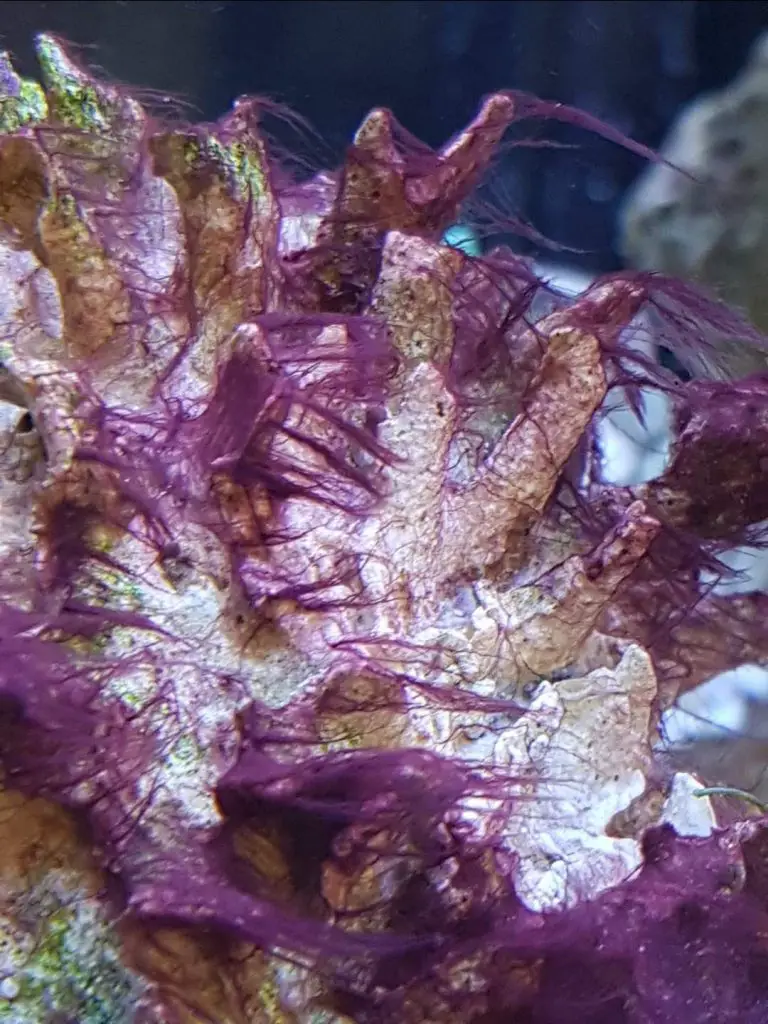
Steps to get rid of red slime in a reef tank
Knowing that Cyanobacteria is likely to occur for any number of reasons, and that it can be difficult to determine the cause, the next steps are aimed at complete eradication. By following these simple steps below to get rid of red slime, you will be improving the overall environment in your aquarium. This will aid in the growth of coralline algae and corals, making it more difficult for Cyano to make a come back.
1. Increasing flow in the affected area
One of the first areas to look at in the battle against red slime is flow. The purpose of flow in a saltwater aquarium is to aid in oxygenation, keeping your corals clean, and eliminating dead spots. It is in these dead spots that Cyanobacteria tend to start and flourish. By increasing flow throughout your tank, you are giving Cyano less chance of a foot hold.
If you already have Cyano showing up, simply increasing flow will not get rid of red slime. This is only the first step in a multi-step procedure.
2. Manual removal of red slime in a reef tank
Cyanobacteria will not disappear by itself, it needs a forceful helping hand. You will need a basic aquarium siphon with the gravel attachment removed, or a length of 1/2″ aquarium tubing to create a siphon. You will also need a 5 micron filter sock.
If red slime is covering the sand:
Cyanobacteria tends to attach very lightly to the top layer of sand. Using the siphon tube, place one end in the aquarium, holding it in place and create a siphon by sucking on the other end. Place this end in the filter sock, which you have in your sump. The density of the 5 micron sock will stop red slime from passing through, but will allow water to pass back into your tank.
Pass the end of the siphoning tube over the top of the red slime and watch how it lifts it from the sand. It will also lift a thin layer of sand that will have to be discarded along with the Cyano.
If red slime is covering live rock:
Cyano tends to have a slightly better hold on a rockface, however you can continue using the same tube. Instead of passing it over the top of the slime, you may have to drive the siphoning end into the rock, inside holes and crevices.
Manual removal is a daily activity with Cyano, until you start seeing a reduction or elimination. This is the method I have used on many occasions to get rid a red slime in a reef tank.
3. Follow good tank maintenance practices
Often by staying on top of the maintenance of an aquarium, the red slime could start to diminish and then die away completely. Good practices in themselves do not have a direct impact on Cyanobacteria, but by following good tank husbandry practices you are helping good bacteria, coralline algae and corals to outcompete and get rid of red slime.
4. Introducing good bacteria to outcompete red slime
In addition to good tank maintenance, which aids in keeping a healthy good bacteria population, we can also be proactive by adding more bacteria to the equation.
Brightwell Aquatics Microbacter7
Dr Tim’s Waste Away
Although it is difficult to say exactly why these bacteria work in controlling and eliminating Cyanobacteria, it is thought that they may compete for available surface area and even out-consume available nutrients.
- BIOLOGICAL FILTRATION: Complete bioculture that establishes effective biological filtration in new aquariums with essential microbes for a healthy tank.
- BIOLOGICAL DIVERSITY: Fosters a diverse microorganism community, promoting the breakdown of organic waste, enhancing water quality, and safeguarding the well-being of your aquarium's residents.
- PATHOLOGIST TESTED: Veterinarian Pathologist tested and recommended.
5. The final solution: chemicals
The use of chemicals in a saltwater aquarium is always the last resort. Normally if nothing else has worked, or you have an outbreak that is threatening to kill your corals, then it is time to use a product like Chemiclean Aquarium Treatment. If you follow the advice given given and dose as recommended, this treatment is safe to use in a reef tank.
It should be noted that as soon as this is added to your water, your skimmer will go nuts and start overflowing. Do not turn it off, but follow recommendations on dealing with an overflowing skimmer here.
Chemiclean will work to get rid of red slime in one or two applications. If you are on top of tank maintenance, Cyano should not reappear, but never say never.
Check out my review of Chemiclean red slime remover here.

Hi, my name is Craig.
I am the owner of The Salty Side.
Firstly, thank you for visiting us. If you have found this article to be informative, and you now have a better understanding of the topic, then my job is done.
If you are feeling charitable, and feel I deserve a little thank you, I thank you in advance for any support given.


